The primary difference between DOT 3 and DOT 4 brake fluid is their respective boiling points.
I suspect I know your next question.
But first, some background. The U.S. Department of Transportation (DOT) classifies brake fluid into four main categories:
- DOT 3
- DOT 4
- DOT 5
- DOT 5.1
Their primary differences are their wet & dry boiling points and their composition.
| Dry Boiling Point | Wet Boiling Point | Composition | |
|---|---|---|---|
| DOT 3 | 205°C/401°F | 140°C/284°F | Glycol Ether |
| DOT 4 | 230°C/446°F | 155°C/311°F | Glycol Ether/Borate Ester |
| DOT 5 | 260°C/500°F | 180°C/356°F | Silicone |
| DOT 5.1 | 260°C/500°F | 180°C/356°F | Glycol Ether/Borate Ester |
DOT 3 is the most common type used in cars and trucks today. DOT 4, however, is gaining popularity due to widespread use of anti-lock braking systems and traction control, which benefit from DOT 4 fluid’s lower viscosity.
Are DOT 3 and DOT 4 Brake Fluid Compatible?
Yes. DOT 3 brake fluid is compatible with DOT 4 brake fluid. However, DOT 4 offers a higher boiling point.
DOT 5.1 is used in high-performance and heavy-duty applications due to its high boiling point. It’s compatible with DOT 3 and DOT 4 fluid.
DOT 5 brake fluid is silicone, meaning it doesn’t absorb water. It’s not compatible with the other brake fluids and is used mostly in classic cars that remain in storage for long periods and need a brake fluid that doesn’t absorb water.
Bring it to a Boiling Point
So, now we’re back to boiling point. What does it mean? After all, we’re not cooking this stuff.
Well, in the right operating and ambient conditions, you are cooking it.

Braking generates intense heat between the brake pads and rotors. Maybe you’ve seen a race on TV where the producers stick a GoPro under the car to show the brakes literally glowing red when the driver depresses the pedal.
Intense heat can vaporize brake fluid, causing it to become compressible, which leads to a spongy feeling when you apply the brakes.
That leaves gas in the lines, which is compressible, leading to a soft pedal. In racing and performance-driving circles, this is known as brake fade, and it’s something drivers actively want to avoid. To drive as effectively and safely as possible, the driver must be confident the brakes will perform on lap 10 as they did on lap one.
Brake fade can also come from the brake pad/rotor interface. The pads release gasses, which reduces contact between the pads and rotors. That’s why high-end rotors are slotted and drilled – to release gasses quicker, limiting fade.
Brake Fade Isn’t Just for Racers
Descending a steep hill, especially when hauling a heavy load or towing a trailer, can generate tremendous heat if you ride or pump the brakes.
By the time you reach the bottom, your pedal may go nearly to the floor, making your heart rate go nearly through the roof.
PRO TIP: Next time, downshift into a lower gear before descending a steep incline.
If you like to toss your vehicle around a curvy country road for a little therapy, standing on the brakes going into corners can create sufficient heat to cause brake fade, too. If you get a little too zealous, you may end up going right through a corner and into the woods.
The fluid’s boiling point indicates the temperature at which the brake fluid vaporizes. The higher the DOT classification, the higher the boiling point, thus the better the fluid is at resisting heat. That’s why racers use DOT 4, not DOT 3, brake fluid.
Boiling Point is Separated Into Dry & Wet Boiling Points
The dry boiling point is determined using fresh fluid straight from a new container. The fluid’s wet boiling point is determined using fluid that’s been contaminated with 3.7% water, thus it’s always lower than the dry boiling point. Why would test administrators contaminate good fluid? Because it’s a reflection of what happens in the real world.
Brake fluid is hygroscopic, meaning it absorbs water (except silicone-based DOT 5 brake fluid). DOT 3 fluid, for example, can absorb up to 2% water every year. Moisture can enter the system when you remove the reservoir cap to add fluid, through worn seals and even through the rubber brake lines themselves. Thus the fluid’s wet boiling point is the number that more accurately represents what’s really going on in your vehicle.
Since brake fluid can wear out, it’s vital you change it periodically. Otherwise, not only will your brakes become spongy and unsafe, the moisture will slowly corrode metal components.
A good rule of thumb is to change the brake fluid every other year in passenger vehicles, and at least every year in racing vehicles. The AAA says 88% of motorists overlook brake maintenance, so you’re not alone if you haven’t changed brake fluid in awhile, like since you bought your vehicle.
It’s not too late to start, though. And when you do, check out our line of brake fluids for your vehicle.


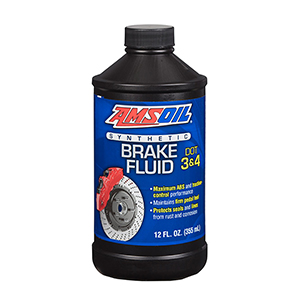

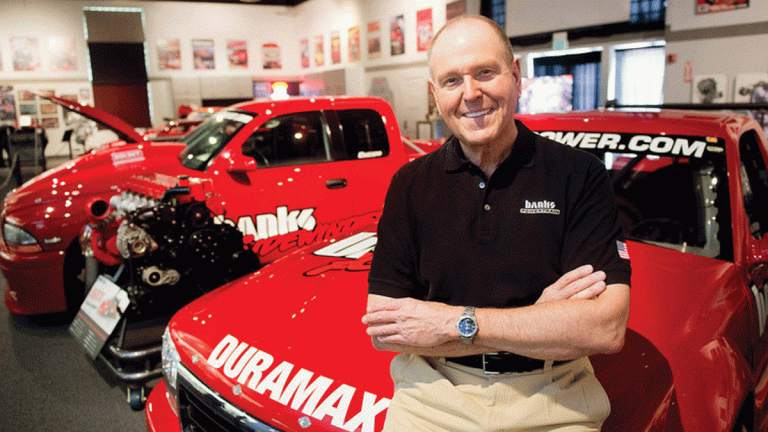
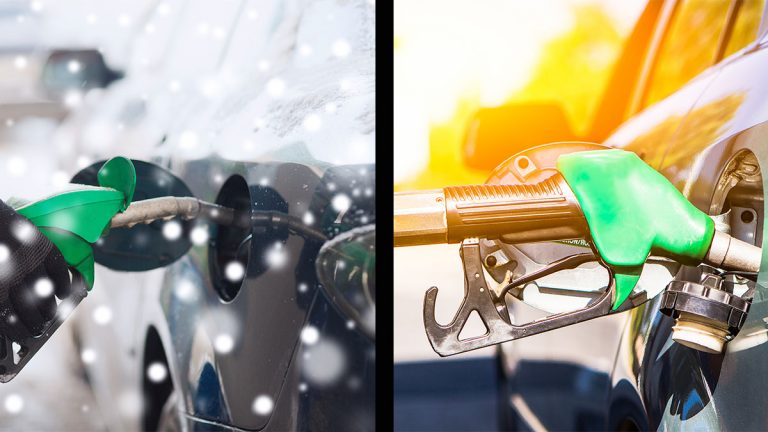
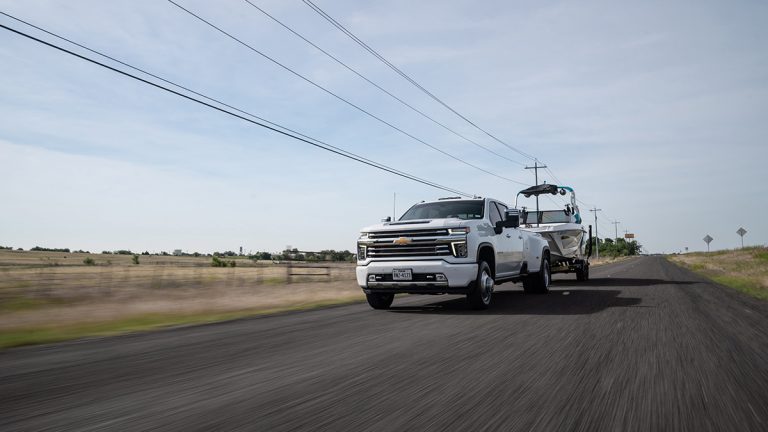
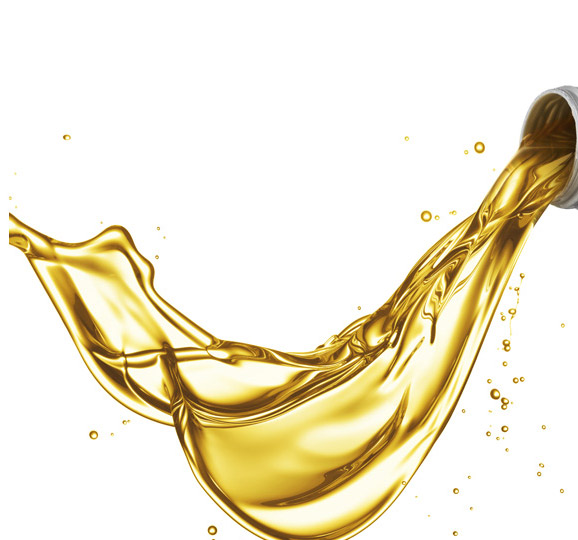
I an not find dot4 brake fluid in Cleveland-Euclid, Ohio so I have given up.
If you have it I should like to purchase some as long as it is not costly.
I have a 2004 chevy trailblazer 4.2/4×4. ALSO
a 2004 gmc envoy 4.2/4×4.
Hi Patrick,
We have several independent AMSOIL Dealers in the Cleveland area from whom you can buy AMSOIL DOT 3 and DOT 4 Synthetic Brake Fluid. Just use our AMSOIL Locator to find one near you. Or, you can simply order online at amsoil.com.
Thanks,
John
HI John;
Always impressed with how you explain all factors completely and in easy to understand terms.
Relating to brake fade from heat, as an old Ex-Greyhound coach driver (For a Community College),for many years which had Detroit 2-stroke engines, and NO engine brake, we soon learned about brake fade after our first trip,usually. After a few excursions,it became incumbent to figure out how to reduce brake heat,and had many different cures,from mechanics and drivers, but the biggest challenge for any driver was not how to do it but ,rather to accustom ourselves to stick with the procedure we found best — 5 pounds of air pressure in 60 second intervals. Invariably did the job,even on long California hills,and some of us had to learn it by instinct,because some older coaches did not have application rate gauges. But it seemed like forever for the next application of the foot. It Was Fun.
Thanks for listening. Big Al B
Hi Al,
Thanks for the kind words and the story. While I’ve never driven a Greyhound bus, I did drive a delivery truck professionally several years ago. Several tons of metal plus a couple tons of freight made for some interesting descents down the hills in Duluth, Minn., so I can relate.
Thanks for reading,
John
It can be an expensive process to have it done every time. And to do it yourself you will need help.
Usually you do need another helper. But you can do it alone if you have a hand held vacuum pump & jar. Just pull the fluid right thru al by your self. Har___ Freight sells them cheap.
Through this article I can’t conclude that why DOT 3 is used in SAE vehicles….
Because it’s cheap for the manufactures.. I replace with DOT 4 (passenger cars) or 5.1 (trucks or motorcycles) almost right after purchasing a vehicle whether its new or used…
Is the Amsoil Dot 3 and Dot4 Synethic Brake Fluid: Dot 3, Dot 4, or Dot 5.1? The back of the can seems to suggest that it is Dot 5.1. Please verify.
Please also forward your email comments to my email. It takes a long time for me to locate a specific blog article within your website.
Hi Steve,
You can use AMSOIL DOT 3 & 4 Synthetic Brake Fluid in passenger car, light truck and powersports applications that require a DOT 3, 4 or 5.1 product. However, do not mix with DOT 5 fluid.
Thanks,
John
The back of the Amsoil Brake Fluid can’s label suggests that it is Dot 5.1. Is this fluid Dot 5.1?
Hi Steve,
Yes, the product is recommended for applications that require DOT 5.1 brake fluid.
Thanks,
John
Good morning Mr. Baker,
I’ve been on-line learning about brake fluid differences.
This Web site has been very informative, thank you.
That said, my 2013 Corvette Grand Sport with manual trans has a hydraulic clutch. The owners manual calls for SUPER DOT4 brake fluid to be used.
Please, can you include the difference in SUPER DOT4 as compared to DOT3 and DOT4.
You can e-mail me with the info if you wish.
Thanks very much,
Mike Waal
Chestertown, MD
Hi Mike,
For a question that specific, I recommend calling our Technical Services Department at 715-399-TECH. They can help you out.
Thanks,
John
Brake fade refers to the reduced friction between the pad or shoe and the rotor or drum as a function of increasing heat. It does not refer to the boiling out of the cylinder due to heat. That’s why it’s called fade, because it is gradual process as the termperature of the parts goes up. If the fluid boils out of the cylinder completely, then your brake pedal will go to the floor when you first press it, but usually the 2nd or 3rd stroke of the pedal will refill the cylinder and give you braking again. Brake fade can happen even with fully mechanical brakes, with no fluid or hydraulics involved, because it is due to reduced friction between hot parts, not loss of fluid.
Hi Nick,
I think this section of the post harmonizes with the point you make: “Brake fade can also come from the brake pad/rotor interface. The pads release gasses, which reduces contact between the pads and rotors.”
Thanks for reading,
John
No bro! The heat reduces the frictio, ok but it is very low! Of course the thermal expansion in drum brakes, makes a distance between brake shoes and drum, so it will reduces brake proficiency, but in rotory brake system the expansion does vice versa! There are three cuase for brake failure I’m writing it in sequence of appearance:
1 – Thermal expansion but only in drum brakes (happens ~ 350 Centigrade)
2- Brake fluid vaporing (depends on lots of variables may happens while the brake shoe/pad heat is ~ 900 Centigrade)
3- Generated gas, locked between brake shoe/pad and drum/rotor (which I have tested it atleast dozen times driving bit fast in rainy weather and at that very moment when water splash on my brakes, I press brake pedal as hard as I can. The brake does not fades and would not touches the floor but I feel almost no decelerating!)
Some vehicles like newer F150’s are requiring a DOT 4 LV brake fluid. LV for low viscosity. Does AMSOIL offer the proper brake fluid for such applications?
Hi Mike,
Yes, DOT 3 and DOT 4 Synthetic Brake Fluid is recommended for the newer F150s.
Thanks,
John
My car says “use Dot 3 only”. I have been searching for Dot 3 but it’s only Dot 4 on the market.. Can i use that, does it has any effect? Others say it causes Kits to misbehave.. How tru is this.?
Email response will be ideal.
The comment about brake fluid boiling, and more so when under pressure, interests me. A coolant radiator has a pressure cap that has the effect of raising the boiling point of the coolant. Higher the pressure, the higher the boiling point. So does this not apply for brake fluid? Good article by the way!
Hi Martin,
I reached out to one of our chemists, and he said artificially increasing the pressure in the braking system would just cause the calipers to apply the brakes when not actually braking since any pressure on the system moves the piston/brake pad in the rotor. You could theoretically put it under a pressurized system, which would “raise” the boiling point of the brake fluid. The brake fluid would be able to reach higher temperatures before bubbles would form in the brake lines.
Hope this answers your question.
John
Good easy explanation. We’re not all mechanical engineer’s. Thank’s.
What if we put Gulf dura max Dot 3 instead of Dot 4 in Ashok Leyland Captain 2832 Tipper, what will happen?
Hi Jatin,
Tough to say since all vehicles and operating conditions are different. Check the owner’s manual for proper recommendations. The manufacturer may recommend either DOT 3 or DOT 4. Unlikely, but it’s worth looking. If the OEM says only to use DOT 4, then bleed the system and install the right fluid. You don’t want to take chances with brakes.
Thanks,
John
Hi John,
My concern is I use a lot of brake fluid I constantly got to fill the reservoir. What can be the problem? Please help.
Hi Vincent,
It sounds like you have a leak somewhere. Have someone depress the brake pedal while you look under the vehicle for brake-fluid leaks. Check at each wheel. Follow the brakes lines under the vehicle and look for fluid leaks. If it’s an old vehicle, rust could have deteriorated the lines. It’s happened to multiple vehicles I’ve owned. If you find a leak, get it fixed immediately.
Good luck,
John